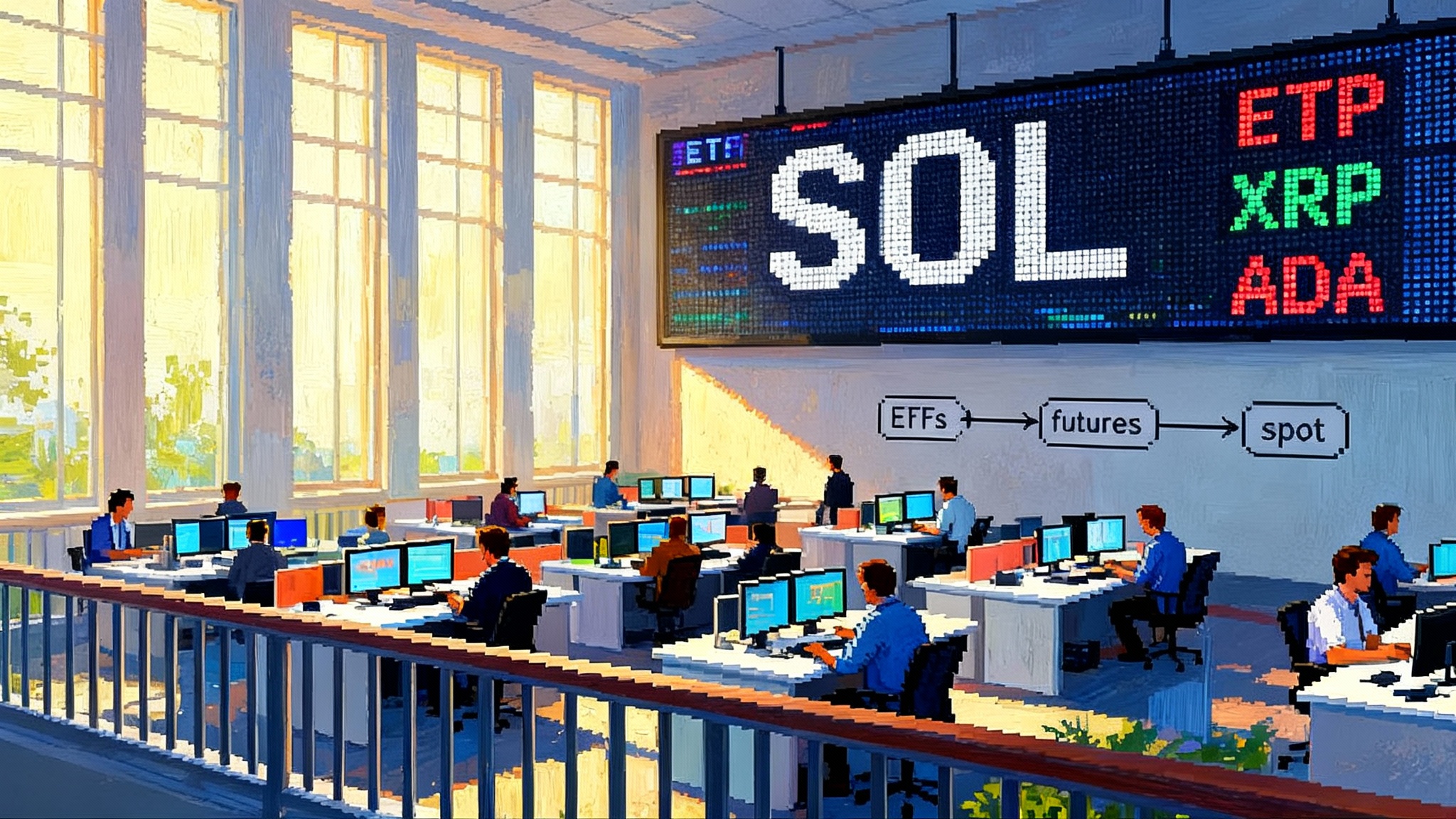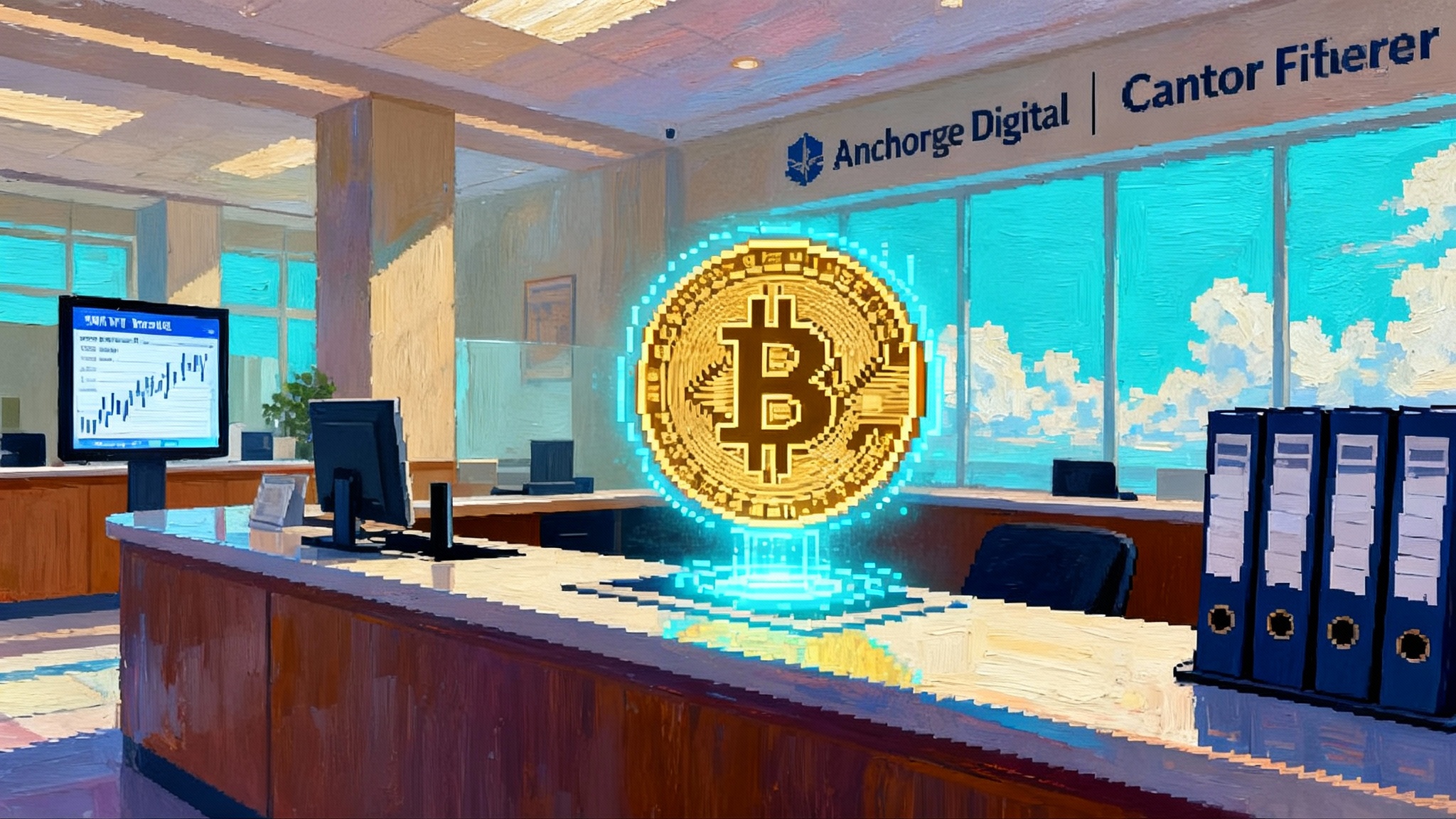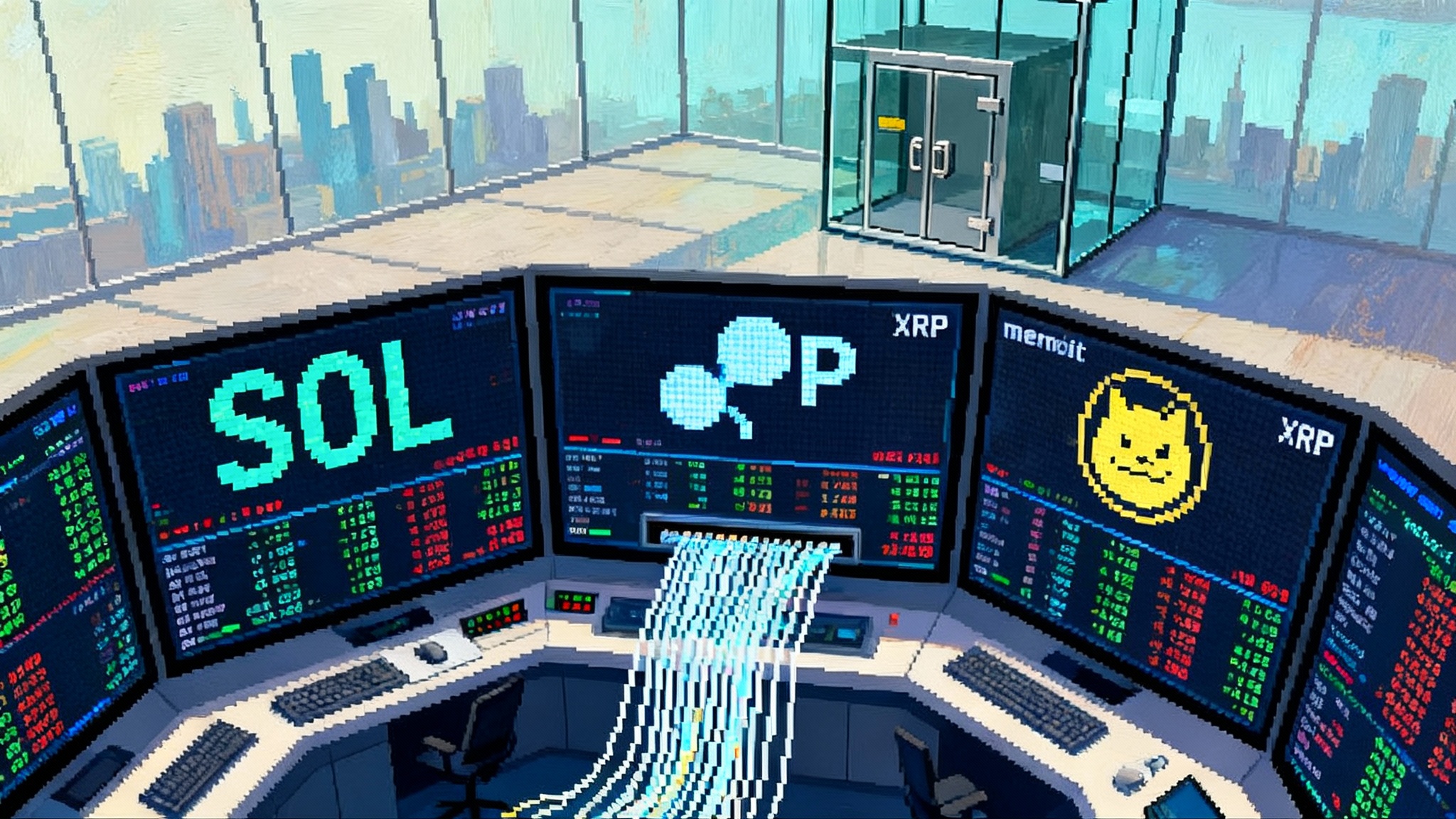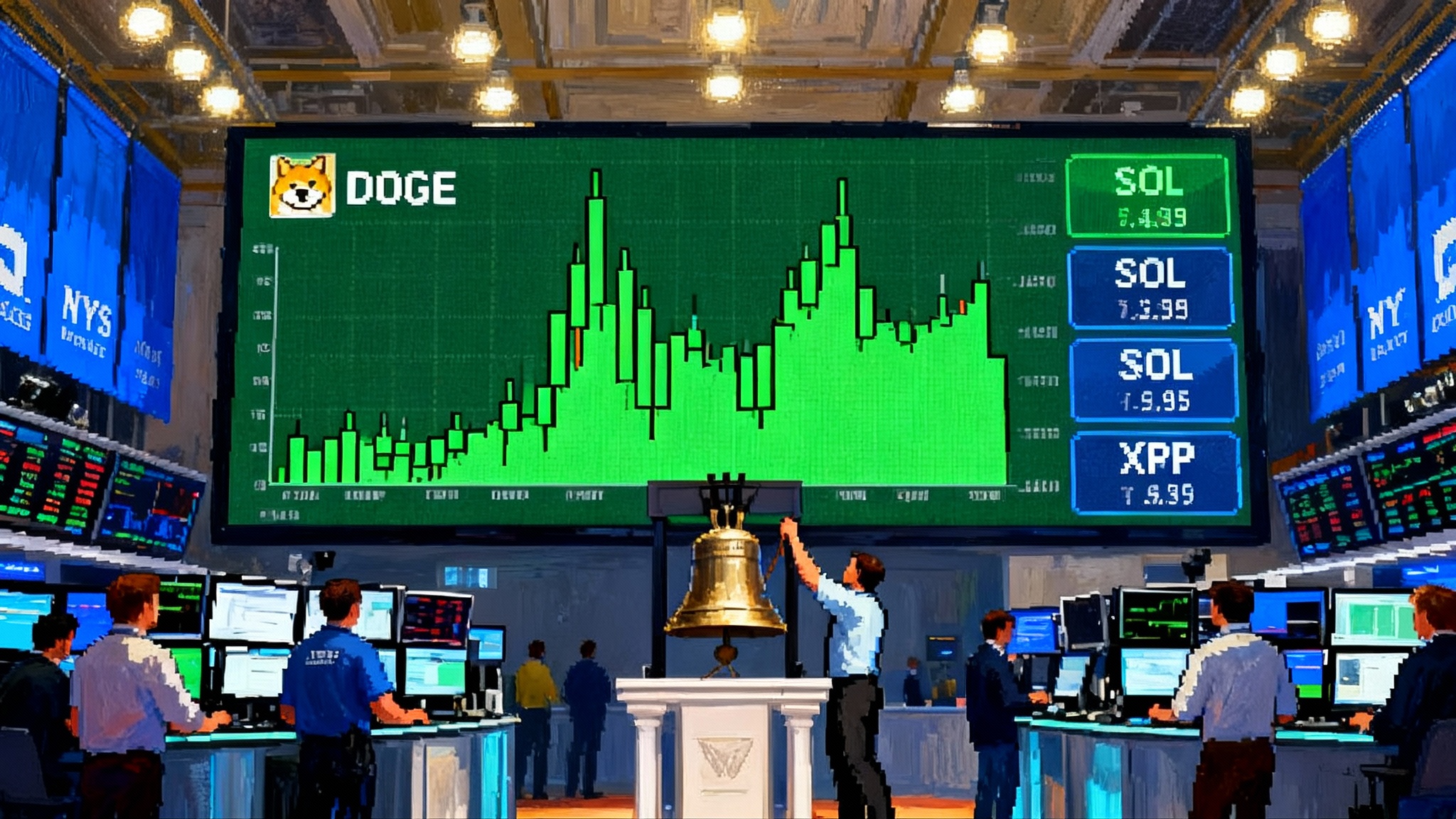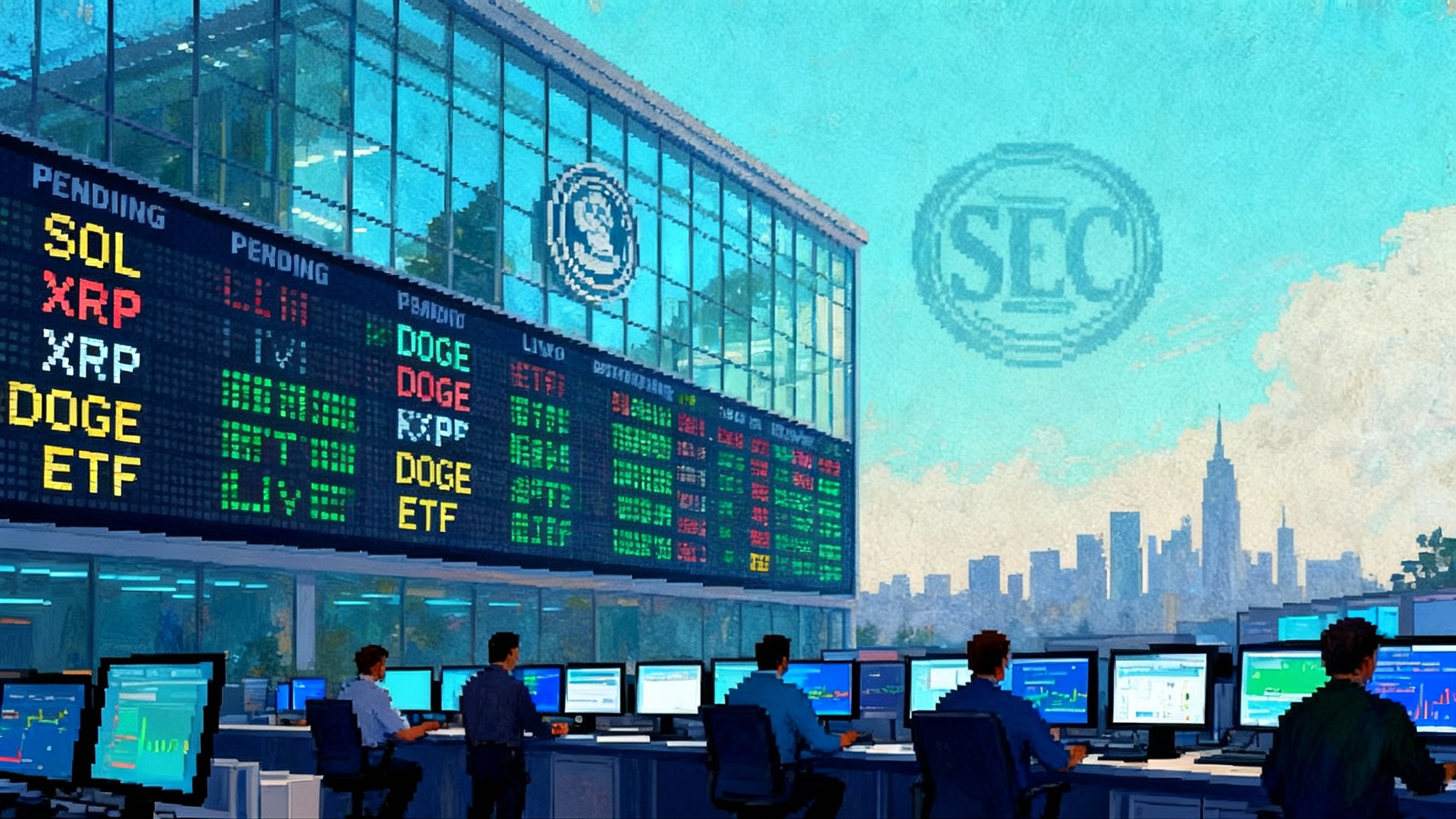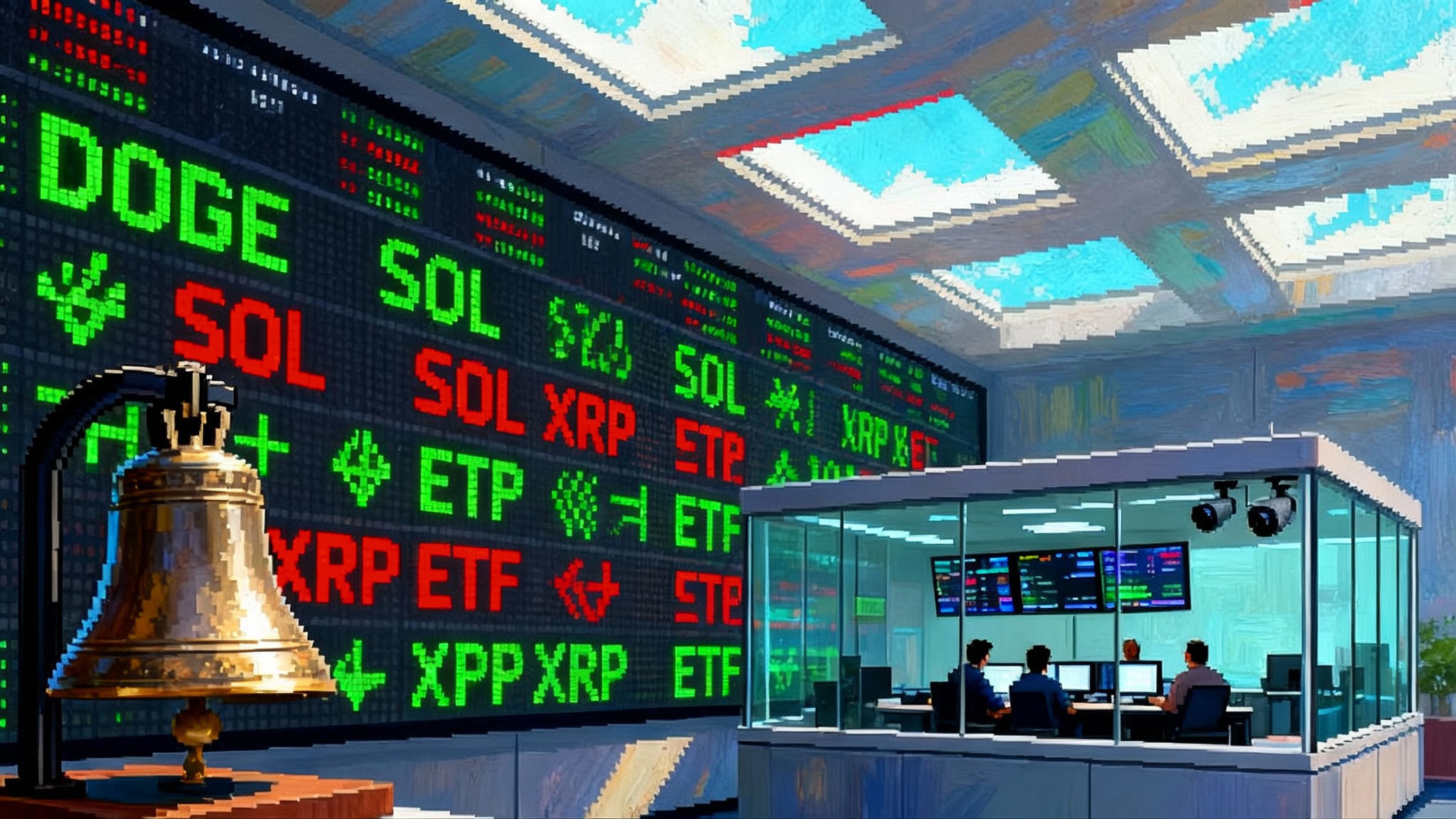Solana ETF verdict in October could reshape altcoin market
The SEC’s October 2025 window for multiple Solana spot ETFs is the next big catalyst for crypto market structure. Here is how approve, deny, or conditional outcomes could ripple across flows, staking, DeFi, and the path for other altcoin ETFs.
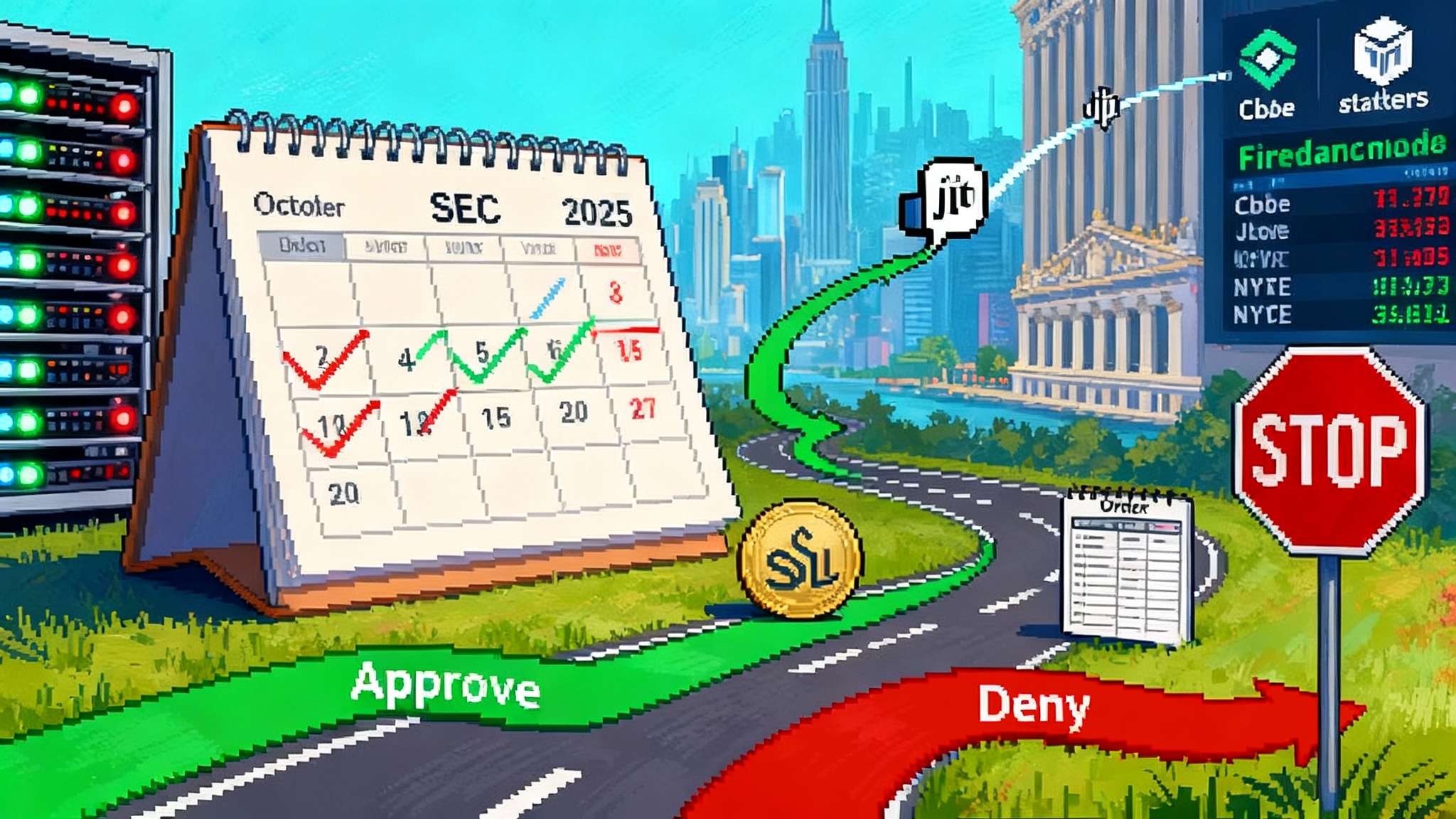
Why October matters
The U.S. Securities and Exchange Commission has clustered key decision dates for several Solana spot ETF proposals in October 2025. Cboe BZX’s filings for 21Shares and Bitwise advanced to formal proceedings on August 14, which typically sets the final leg of the 240‑day clock and puts mid October on the calendar. You can see one of those public notices on the SEC site for the 21Shares Core Solana ETF. SEC notice on 21Shares Solana ETF. (sec.gov)
Other Solana filings, such as Bitwise’s proposal on Cboe BZX and Grayscale’s proposal on NYSE Arca, have followed similar timelines into the fall. Together they create a clean decision window that will likely define U.S. access to non‑BTC and non‑ETH spot exposure for the next cycle. (federalregister.gov)
One more wrinkle raises the stakes. In mid September 2025, the SEC approved generic listing standards that can shorten listing timelines for spot commodity ETPs, including digital assets, once eligibility criteria are met. That policy shift may compress launch timelines if approvals arrive, and it signals the Commission’s broader comfort with spot crypto ETP mechanics compared with 2023. (reuters.com)
Below is a scenario analysis of what approval, denial, or a conditional path would mean for ETF flows and liquidity, Solana staking and validator economics, DeFi TVL and activity, the surveillance and manipulation standard, and the knock‑on effects for other altcoin ETFs like XRP and ADA.
Scenario 1: Approval
ETF flows and liquidity
Lessons from the spot bitcoin and ether launches suggest a fast two‑step: day‑one basis traders and high frequency desks seed liquidity, then larger allocators show up as operational due diligence clears. Ether ETPs won 19b‑4 approval in May 2024, and that decision documented the surveillance and market‑integrity scaffolding that unlocked mainstream access. SEC approval of ether ETPs. (govinfo.gov)
For Solana, an approval in October would likely lead to:
- Tight primary market spreads once a few authorized participants begin in‑kind creations. Expect initial premiums and discounts to compress within days as market makers calibrate borrow and hedging lines.
- A shift of a meaningful slice of SOL spot volume toward U.S. exchanges during U.S. hours. Cboe BZX and custodian venues would gain share as creations ramp.
- A more efficient cash‑and‑carry complex. With Solana futures now on large regulated venues, the arb pipeline between spot ETF shares and regulated derivatives would anchor basis and reduce volatility during U.S. sessions. (reuters.com)
In short, approval likely recycles the BTC and ETH pattern: the ETF becomes the deepest U.S. on‑ramp, and price discovery gets a more balanced mix between crypto native venues and traditional market makers.
Staking and validator economics
Like ether issuers that stripped staking from their filings, Solana ETF issuers would almost certainly avoid staking the underlying, since staking complicates custody, liquidity, and securities analysis. If they mirror ether disclosures, that removes any staking yield from the fund itself and keeps the ETF as a pure price‑exposure vehicle. That choice mattered for ETH and will matter for SOL. (reuters.com)
The second‑order effect is on network economics:
- Staking ratio and yield: Large ETF holdings that do not stake reduce the share of circulating SOL that earns staking rewards. All else equal, that can lift the nominal yield for remaining stakers. Liquid staking tokens may absorb incremental inflows as investors who want both price and yield split allocations between the ETF and LSTs.
- MEV and tips: On Solana, validator revenue is not just emissions. Jito tips and priority fees have become a significant fraction of revenues, with the Jito client widely adopted by stake weight. If ETF coins sit idle in cold storage, they do not participate in leader slots, so they neither earn tips nor share them with delegators. That concentrates MEV income among active validators and could nudge more capital into LSTs that route stake to high performing operators. (app.blockworksresearch.com)
- Client diversity: Firedancer adoption has been rising, improving client diversity and throughput resilience. A price‑led wave of new stake from non‑ETF investors could accelerate operator investment in Firedancer deployments and hardware. As of spring 2025, Solana reported Firedancer in hybrid form on mainnet with a material share of stake, a milestone for resiliency. (solana.com)
Net, approval tilts economics toward professional validators, MEV‑aware infrastructure, and LSTs, while the ETF itself remains non‑participatory in staking. That is healthy for decentralization if delegation programs continue to reward smaller, performant operators.
DeFi TVL and on‑chain activity
Expect a two‑phase impact. In phase one, ETF‑driven price gains and marketing lift awareness and pull new users to wallets and on‑chain apps. In phase two, some share of ETF investors migrate into higher yield on‑chain instruments once they build basic comfort with Solana tooling. The effect on TVL can be significant if wallet and bridge UX keeps friction low.
Activity mix would likely skew to:
- Stablecoin and perps venues that benefit from deeper liquidity and lower slippage as new market makers add inventory to the ecosystem.
- LST‑powered strategies that monetize staking yield and Jito tips indirectly through validator selection, since ETF assets are not staked.
- Payment and consumer apps that benefit from throughput improvements tied to client diversity and scheduler upgrades, which can reduce contention at peak times.
The BTC and ETH experience suggests that ETFs do not cannibalize on‑chain activity. They widen the top of the funnel, then a subset of capital graduates to native yield and utility.
Surveillance and market integrity hurdle
If the SEC approves, it will be because issuers satisfied two familiar standards from the BTC and ETH orders: a robust surveillance‑sharing agreement with a regulated market, and evidence that manipulation risk is sufficiently mitigated because a regulated market of significant size can detect and deter bad behavior. The ether order laid down that template in May 2024, and it has become the default reference for crypto ETP approvals. (govinfo.gov)
Solana’s case benefits from the emergence of regulated U.S. futures on a major exchange, which supports both price correlation analysis and surveillance plumbing. That reduces a key structural objection that existed in 2023. (reuters.com)
Second‑order effects on other altcoin ETFs
An approval of SOL would immediately raise the probability for XRP and ADA spot products that have their own fall deadlines. The SEC’s September move to generic listing standards strengthens this momentum by lowering procedural friction once eligibility criteria are met. A green light for SOL would likely be cited in subsequent orders as evidence that the surveillance framework can generalize beyond BTC and ETH. (reuters.com)
Scenario 2: Denial
ETF flows and liquidity
A denial would force allocators back to offshore exchanges, trusts, and broker‑wrapped notes. U.S. hours would see thinner regulated liquidity, wider spreads for SOL products on traditional venues, and more volatile basis between offshore perps and spot. Basis traders would unwind ETF‑themed positions, which can amplify short‑term price pressure.
Staking and validator economics
No ETF means more of the circulating float stays in self custody or LST wrappers. That keeps the staking ratio higher than in the approval case. Validator revenues from tips and priority fees remain the main levers for improving net yield. Expect continued competition among MEV clients and tooling to win delegation, especially from liquid staking pools that score validators on MEV commission and reliability. (jito.network)
DeFi TVL and activity
Without the ETF’s distribution muscle, TVL growth leans on native drivers: new consumer apps, perps, and LST strategies. The upside scenario narrows, but capital already inside the Solana economy becomes stickier and more yield seeking. Builders would keep pressing UX and performance improvements to win users who might have arrived via the ETF.
Why the SEC would say no
A denial would likely rest on one or more of these findings: inadequate surveillance linkage to a regulated market of significant size, insufficient evidence that spot prices are led by venues under U.S. oversight, or custody and valuation concerns around the reference price. The Commission has used this manipulation‑risk framework as the gatekeeper in prior orders, only flipping to yes once surveillance and correlation evidence cleared a high bar. (govinfo.gov)
Knock‑on effects
A high profile denial chills the queue for non‑BTC and non‑ETH spot products. XRP and ADA deadlines in October could slide or face a higher evidentiary bar in their notices of proceedings. Issuers would pivot to futures‑based structures or multi‑asset baskets while they gather more data. (cointelegraph.com)
Scenario 3: Conditional or phased approval
Regulators sometimes thread the needle. A conditional yes could look like this:
- Enhanced surveillance‑sharing agreements, named counterparties, and pre‑trade data access commitments that mirror or exceed the ETH standard. (govinfo.gov)
- A requirement for additional futures trading history before S‑1 effectiveness, even if 19b‑4 approvals are granted, which staggers the actual launch date. (reuters.com)
- Explicit non‑staking language in prospectuses, which most issuers have already adopted on other assets. (reuters.com)
- Possible position or creation unit constraints early on to monitor market function, then a later expansion.
This path would still deliver the ETF flywheel for liquidity and access, just on a slightly delayed trajectory.
Deep dive: staking, MEV, and Firedancer under each outcome
-
Approval: The ETF likely becomes a large non‑staking holder. Staking APY for others ticks up at the margin. Validators that maximize Jito tip capture and keep commission low become more attractive for LST delegations. Firedancer’s share continues to rise as operators reinvest, improving throughput and reducing tail latency during peak memecoin or airdrop traffic. (app.blockworksresearch.com)
-
Denial: Staking ratio stays higher, which can dilute per‑validator emissions but also spreads leadership across more voting stake. MEV competition remains the key differentiator. Client diversity still improves, since Firedancer adoption has its own momentum tied to reliability and performance goals. (solana.com)
-
Conditional: Hybrid of the two. If launches are delayed for operational conditions, validators and LSTs still get time to scale, and the ETF liquidity arrives into a more mature execution environment.
The SEC hurdle, in plain terms
Two questions decide this:
- Can the listing exchange demonstrate a surveillance‑sharing agreement with a U.S. regulated market that is large enough to detect and deter manipulation that would impact the ETF? 2) Is there empirical evidence that prices in the ETF’s market are meaningfully connected to that regulated venue, so that surveillance matters? Those were the fulcrums in the ether approval order, and they are the fulcrums now. (govinfo.gov)
CME‑listed Solana futures are helpful on both counts. They establish a regulated venue with standardized reporting and give statisticians a dataset to test correlations between futures and spot prices. That does not guarantee approval, but it reduces the distance from no to yes. (reuters.com)
Second‑order effects: XRP, ADA, and the rest
-
If SOL is approved: Expect accelerated work on XRP and ADA spot products. Several of those proposals face October deadlines of their own, and the SEC’s September policy update on generic listing standards lowers procedural friction once surveillance conditions are in place. The psychological effect matters too. A third major spot asset would normalize altcoin ETFs as a category. (cointelegraph.com)
-
If SOL is denied: Issuers will likely pause or revise non‑BTC and non‑ETH plans, or lean into futures and basket ETPs instead, until they can present stronger surveillance and correlation analyses.
Positioning checklist for investors and builders
Here is a short, pragmatic checklist for the weeks leading into the October window.
For investors
- Map your exposures to three outcomes. Predefine what you will do on approval, denial, and conditional outcomes, including target allocation ranges, preferred tickers, and a rules‑based rebalancing plan.
- Prepare the hedges. If you plan to trade the launch, line up borrow, establish futures or options accounts, and define basis targets you will act on. Solana futures on regulated venues help, but basis can still whip around on day one. (reuters.com)
- Separate price beta from yield. If you want SOL price exposure only, the ETF is clean. If you want yield, keep a sleeve in LSTs or delegated staking. Do not assume the ETF will ever stake.
- Focus on fees and structure. Compare sponsor fee, creation unit size, in‑kind capability, and custodian. For long horizons, a 40 to 60 basis point fee gap compounds.
- Watch liquidity where you trade. In the first week, spreads and depth can vary by venue and time of day. Use limit orders and measure slippage.
For builders and validators
- Read the flow. Approval brings more U.S. capital. Make the first session a great on‑chain experience. Harden RPC capacity, raise rate limits, and test failover.
- Compete on MEV fairness and net yield. Transparent MEV commission, consistent leader uptime, and low validator commission win delegation from LSTs that score operators on these criteria. (jito.network)
- Diversify your client stack. Pilot Firedancer or hybrid deployments to improve performance and resilience during traffic spikes. Publish uptime and block quality metrics that delegators can verify. (solana.com)
- Design ETF‑adjacent products. Consider wrappers that pair SOL price exposure with a small LST sleeve or a basis overlay so investors can bridge from ETF beta to on‑chain yield safely.
- Plan for both outcomes. If denial hits, push harder on consumer apps and perps that do not depend on ETF distribution. If conditional approval hits, use the delay window to refine onboarding and monitoring.
The October Solana decision is not just a headline. It is a structural pivot that could redefine how U.S. investors hold and trade altcoins, how validator economics evolve on Solana, and how fast the next wave of non‑BTC and non‑ETH ETFs comes to market. The lessons from bitcoin and ether show what a green light can do for liquidity and access. The rest of 2025 will reveal whether Solana joins that club, and how the market rewires around the outcome.
